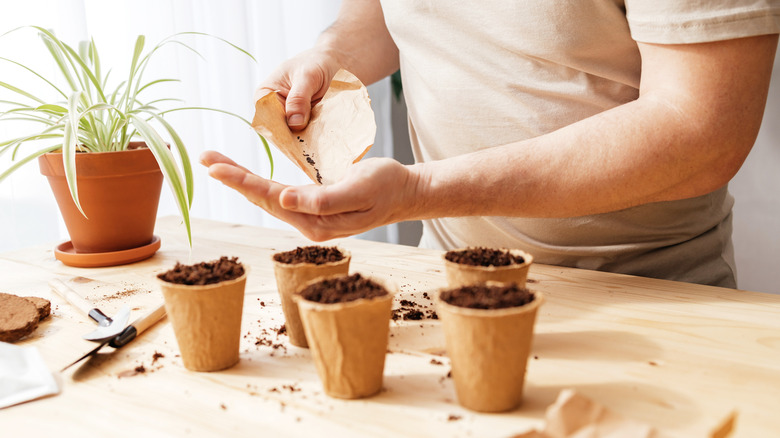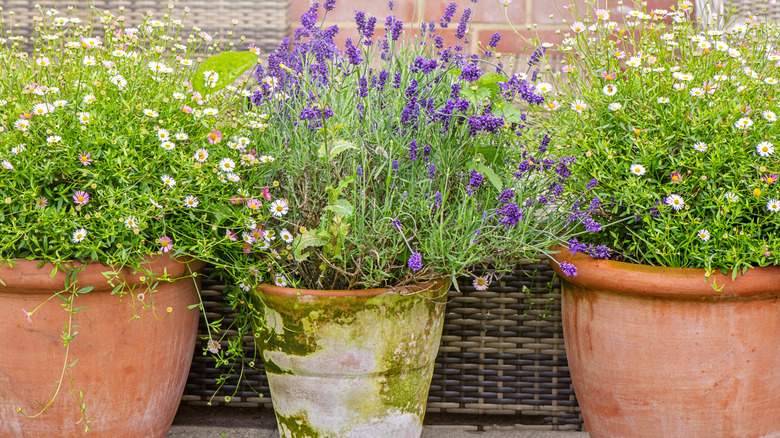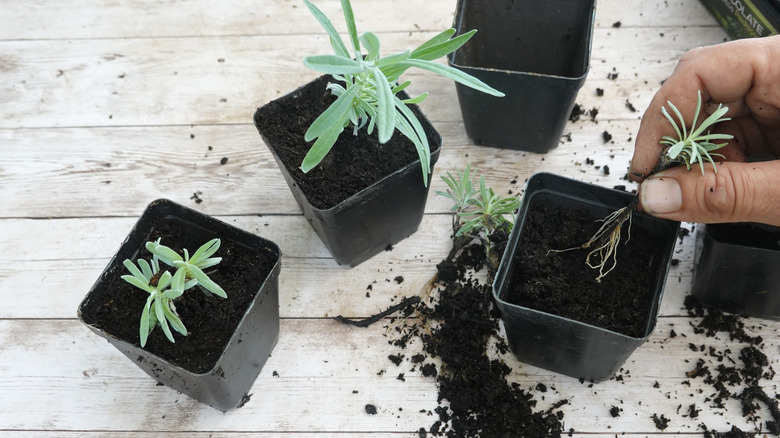The Flowering Herb You Might Not Want To Grow From Seed
If you have dreams of brushing by bushes of lavender in every corner of the garden and smelling the pleasing aroma of this fragrant herb in the air, you may want to reconsider starting with that packet of seeds you bought. "Lavender seeds have very specific demands. The environment must be perfect for germination," says Tiffany Selvey, House Digest's Garden Editor and in-house Master Gardener, exclusively to House Digest. When you're starting seeds indoors, space is often at a premium, so you may want to save that precious spot for a seed that's more likely to succeed.
"They need light, but not too much," says Selvey of those troublesome lavender seeds. "The soil must be consistently moist, it needs to be perfectly warm, and if they do sprout, you have to manage to keep the finicky seedlings alive long enough to transplant them." Unless you have a heat-controlled greenhouse or are an expert gardener, these seeds may not be the best use of your time. The good news is that there is an easier way to propagate lavender so you can fill the garden without breaking the bank.
A better way to propagate lavender
Obviously, starting lavender from seed is not impossible. In fact, it "...can be a fun challenge," says Tiffany Selvey, in an exclusive interview with House Digest. So, if you're looking to put your skills to the test, it could be worth a try. "But woody herbs in general, like sage, thyme, and rosemary, are consistently difficult to grow from seed and take a long time to reach maturity," she adds.
Frankly, lavender can be a finicky plant — even something as simple as humidity can be a silent killer of this fragrant favorite. However, if you have access to a healthy, happy lavender plant, get your scissors ready. Once the growing season starts, you will have a chance to take cuttings and grow your own. "To propagate lavender, cuttings are definitely better than seeds, but you'll still need to anticipate some failure," says Selvey. Spring and summer are the best times to strike. As Selvey notes, that's when "...you have the best chance of rooting them. These softwood cuttings from new growth root much more easily than older, woodier parts of the plant."
Propagating lavender from cuttings
When it comes to lavender cuttings, the key to success is not just quantity — though you will probably want more cuttings than you think you need. You also have to get the details right. "Take cuttings from the green tips of new growth in spring and summer," says Tiffany Selvey, exclusively to House Digest. From there, she advises, "Dip the ends in rooting hormone and place them in a high-quality growing medium, like a peat-based potting mix. Keep the soil consistently moist, and hope for the best!" So much of gardening is out of your hands, and this is one of those times when you just have to wait and see.
So, how do you know if your experiment in propagation has worked? "If you see new growth in a few weeks, or you pull on the stem a bit and it doesn't come out easily, it's likely taken root and will continue to grow," Selvey says. While you wait to see if your new lavender plants are going to survive, she advises, "...make sure the soil is moist, but never soggy, until the plant is well-established." In the meantime, get up to speed on everything you need to know before planting your lavender. Even as mature plants, they have very specific needs, like a lot of heat and full sun.


